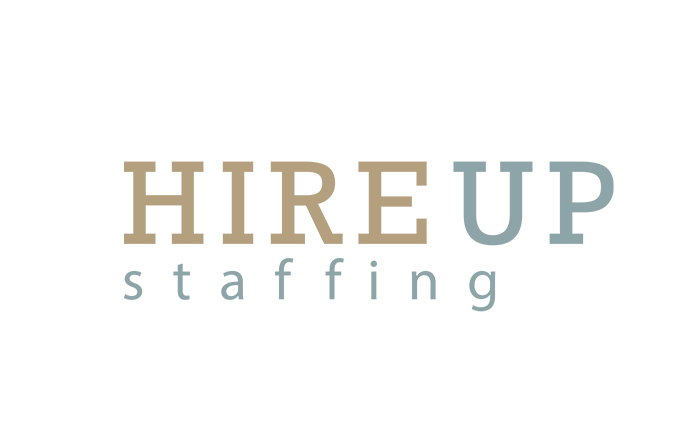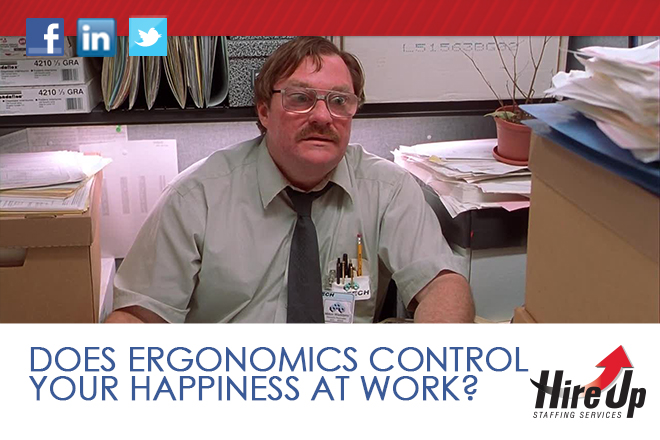How many of you sit in an office for more than 6 hours a day? Do you ever find yourself feeling slightly unhappy or irritated at work due to certain aspects of the environment?
It is typical that your mood can be affected by not just sitting for so long, but also by certain aspects of your work environment. Ergonomics is all about increasing your productivity by making things more comfortable and efficient and there are many things we can do to help! Interestingly enough, we can tell the physical ergonomic aspects of your office by comparing it to how it affects your 5 senses: sight, touch, smell, hearing, and taste. The senses can be converted into the following environmental categories:
Lighting at work:
Your lighting is one of the most essential elements for good office ergonomics. Having the proper lighting level for the type of task being performed increases your comfort and accuracy and reduces eye strain. For some people the type of light affects them. Fluorescent lights can cause a lot of problems. If you can detect the flicker from the ballast in the light it is almost impossible for you to concentrate. And it causes eye strain as well. You can often combat this by wearing a hat that casts your eyes in shadow and block the flicker or by having an incandescent light bulb on as well.
Noise at work:
Noise is one of the most common distractions in an office environment and can prove to be disruptive to your office ergonomics. If it is loud enough and consistent enough it can also cause some health and welfare concerns for those working in the environment.
Outside noise sources like the airport and loading dock or train tracks may cause problems for your employees, but apart from additional sound insulation or moving there isn’t often much you can do about it. Internal office noise pollution is another mater. Office doors can be closed, but often aren’t. Cubicle chatter can be respectful and discreet, but often isn’t. Culture and corporate policy can have a positive affect on this however.
Layout of the office space may be another factor. Cubicles and offices near a conference room or break area are often very difficult to concentrate in. Being located to a main thoroughfare where everyone feels free to talk while walking is another. Primary exits and lobby areas are still another source of office noise pollution and should be considered carefully when making any office layout changes or staffing decisions. Some people can handle the noise better than others so keep that in mind.
Colors:
The colors that surround you can have a lot to do with how you feel when inside the office environment. Colors can have a strong psychological affect on you, especially when staring at the same color for 8 plus hours a day with no escape hatch around.
The psychology of colors has a lot to do with interpretation and understanding of how “expansive” or “intense” a color is. The more vibrant or expansive a color the more it can affect you, especially when in an enclosed space. Expansive colors indoors can give people severe anxiety. While other colors may be a factor in depression.
There are ways to use colors, even bright, expansive colors indoors to achieve many positive affects, but since that can be complicated most people go with toupe or beige since it is rather neutral in the psychological perspective and doesn’t cause any problems, even if it doesn’t cause any excitement either.
Textures:
Textures play a big part in the ergonomics of an office environment in three main ways: immediate tactile feedback, long term bio-mechanical support, and color and light disruption.
The immediate tactile feedback are things that you feel and come into normal contact with, like chairs, flooring, restroom fixtures, etc. If things feel nice you’ll feel nice. If they feel hard or rough then you’ll be uncomfortable. An uncomfortable workers are unproductive workers.
Long term bio-mechanical support plays an important role in fatigue, repetitive stress and musculo-skeletal disorders. A material texture is a component in the type of support it give the user, most commonly sitting or standing on it. There’s also a safety portion of a materials texture that should be considered, especially if it’ll come into contact with water.
The third element of texture is how it breaks up the light and color in the environment. Using texture to reduce glare and soften color transitions can help the ergonomics of an office environment in a lot of ways. Reflective surfaces, ones that cause glare, harsh transitions and small, busy patterns are all stressful and can induce anxiety in confined areas.
Layout:
The overall layout of the office environment needs to be considered for ergonomic issues as much as for aesthetic and human resource issues. Packing in as many people as possible may seem like a good idea, but a worker without the proper room to work is not a productive worker.
An 8′ x 8′ cubicle is the bare minimum for any work space and really only acceptable for work like call center employees that do not require much desk space. A 10′ x 10′ cubicle is marginal for most office workers with 12′ or more in one or both directions a much better solution.
The layout of a work space should really be left up to the individual working there. Some people like to have there backs to the door way while others will be constantly looking over there shoulders. Still some suffer from constant peripheral distraction if placed sideways to the opening. In any case setting the layout without input from the employee is a recipe for lower productivity. In all cases doorways and openings should never be directly in line with one another. Staggered opening give a since of privacy and reduces the peripheral distractions.
Main traffic areas like hallways and conference room areas should always be isolated from the main employee work space. These areas not only contribute to noise, but provide constant visual distractions as well.




